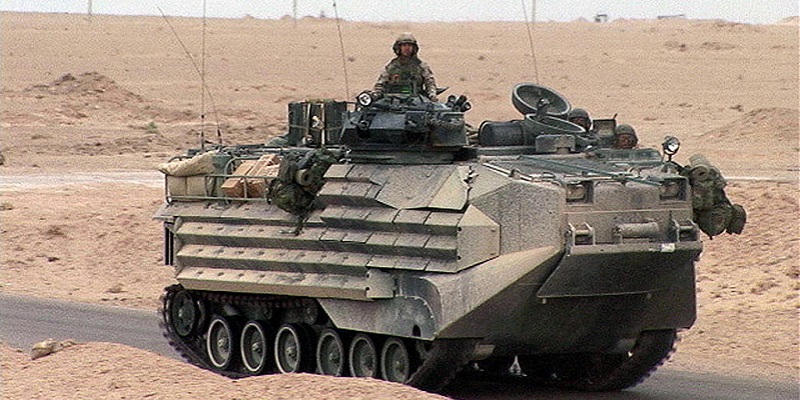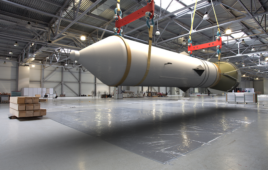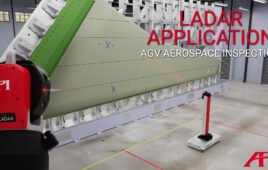
An Amphibious Assault Vehicle (AAV) operated by the U.S. Marine Corps moves into Fallujah, Iraq on April 14, 2004. The Marines Corps will eventually replace the outdated AAV with Amphibious Combat Vehicles (ACV). (Image: U.S. Armed Forces)
BAE Systems Land & Armaments and SAIC have each been awarded U.S. Marine Corps contracts worth more than $100 million for the construction of engineering, manufacturing, and development prototypes of the military branch’s latest Amphibious Combat Vehicle Phase 1, Increment 1 (ACV 1.1), the Marine Corps announced Tuesday.
BAE Systems’ contract is worth $103.7 million, while the deal given to SAIC is worth $121.5 million. The two companies beat out three other contenders who submitted proposals for the opportunity to build 13 of the eight-wheeled, armored-protected, personnel carrier vehicles. (Both BAE and SAIC will eventually build three more prototypes each once an option is exercised.)
“We made sure that the vendors were fully aware of what they were asked to do and that it was in their realm of capability,” said Col. Wendell B. Leimbach Jr., the deputy program manager for the Advanced Amphibious Assault Office.
The Marine Corps determined the manufacturing of the ACV 1.1 is needed so that the more than 40 year old assault amphibious vehicle (AAV) can be replaced. Due to its age, many of the AAV’s parts and components have become obsolete, and no longer made. With the parts unavailable and the AAV breaking down, maintain the vehicle has become too costly. The Marine Corps also needs a vehicle that can handle the missions it currently takes on.
The ACV will draw similarities from the Mine-Resistant Ambush Protected Vehicles in terms of its ability to protect. It will also be more maneuverable and mobile while inland than the AAV. The ACV will feature an extremely accurate weapon station, making it more lethal than its predecessor. The Marine Corps also described the vehicle’s swimming capabilities as “robust.”
The ACV 1.1 is the first step in the process of replacing the AAV, according to Col. John B. Atkinson, the director of Fires and Maneuver Integration Division for the Marine Corps. Later phases of the program will be devoted to the development of recovery vehicles, and associated command and control variants for the vehicle.
Once the prototypes are built, the Marine Corps will conduct an extensive testing period to determine which of the two companies will deliver its ACV vehicles. The vehicles will be evaluated on their ability to protect Marines, fire weapons with accuracy, the ease of repairing the vehicle, and how they meet survivability and reliability standards. By 2020, one platoon of ACVs will be deployed, and all of the 204 vehicles will be ready for deployment by 2023.
Lt. Col. Brian L. Strack, the AAV advocate for Headquarters Marine Corps, said that the organization will work to make the transition to the ACV “as seamless as possible.”
“The whole point is to avoid surprises,” Strack said. “In 2020, when the first platoon of ACV Marines are paired up with their vehicles, we want to make sure they have a place to maintain them, the right number of Marines are there to crew the vehicles and that they have been trained properly.”
Between now and when the ACV is put into use, the Marine Corps will obviously need a vehicle to support its missions. Because of that, upgrades will be provided to 392 AAVs under the Survivability Upgrade Program. The improvements will make the vehicles more resistant to mine blasts, more mobile both on land and in water, and will lead to improved engines, power supplies and seating.
Filed Under: Aerospace + defense




